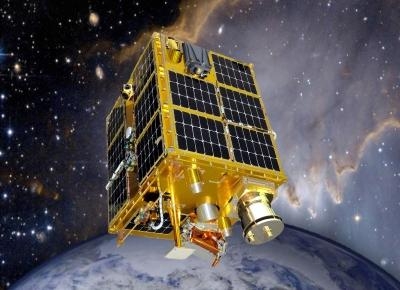Sun, Apr 07, 2013
Research Vessels Can Be As Small As A Four-Inch Cube
NASA is seeking small spacecraft technology project proposals from U.S. colleges and universities that would like to collaborate with agency researchers.

Small spacecraft, or smallsats, represent a growing field of space research and operations in which universities often have led the way in technology development. Smallsats, some of which are as small as a four-inch cube, are not expected to replace conventional spacecraft, but sometimes can provide an alternative to larger, more costly spacecraft. Smallsats can serve as platforms for rapid technology testing or specialized scientific research and exploration not otherwise possible. Smallsats also can be developed relatively quickly and inexpensively, and can share a ride to orbit with larger spacecraft.
"This new opportunity will engage university students and graduate researchers in advancing technology of value to NASA and the nation, and help strengthen our high-tech work force," said Andrew Petro, program executive for the Small Spacecraft Technology Program at NASA Headquarters in Washington. "There is a vibrant small spacecraft community emerging within America's universities and NASA is taking steps to increase our collaboration with that community. The universities will benefit from the deep experience NASA has in space research and technology, while NASA will benefit from fresh ideas and cost-conscious innovation at the universities."

NASA expects to competitively select approximately 10 proposals. Each team will form proposal partnerships with researchers from any of NASA's field centers. Awards for each project will include as much as $100,000 ($150,000 for teams of more than one school). Proposals submitted in response to this NASA cooperative agreement notice are due June 5.
In addition, NASA will fund the time for NASA employees to work with each selected team. Project funding is for one year with the potential to continue for a second year. Proposed projects could include anything from laboratory work to advance a particular spacecraft technology to flight testing of a new smallsat. For example, projects might focus on a technology area such as propulsion, power or communications, or on a smallsat capability, such as formation flight or satellite rendezvous.
(Pictured: NASA FASTSAT SmallSat)
More News
Pilot Also Reported That Due To A Fuel Leak, The Auxiliary Fuel Tanks Were Not Used On June 4, 2025, at 13:41 eastern daylight time, a Piper PA-23, N2109P, was substantially damage>[...]
Have A Story That NEEDS To Be Featured On Aero-News? Here’s How To Submit A Story To Our Team Some of the greatest new stories ANN has ever covered have been submitted by our>[...]
From 2023 (YouTube Edition): Reflections on War’s Collective Lessons and Cyclical Nature The exigencies of war ought be colorblind. Inane social-constructs the likes of racis>[...]
Aero Linx: Colorado Pilots Association (CPA) Colorado Pilots Association was incorporated as a Colorado Nonprofit Corporation in 1972. It is a statewide organization with over 700 >[...]
High Speed Taxiway A long radius taxiway designed and provided with lighting or marking to define the path of aircraft, traveling at high speed (up to 60 knots), from the runway ce>[...]
 NTSB Prelim: Piper PA-23
NTSB Prelim: Piper PA-23 ANN FAQ: Submit a News Story!
ANN FAQ: Submit a News Story! Classic Aero-TV: One Mans Vietnam
Classic Aero-TV: One Mans Vietnam ANN's Daily Aero-Linx (07.03.25)
ANN's Daily Aero-Linx (07.03.25) ANN's Daily Aero-Term (07.03.25): High Speed Taxiway
ANN's Daily Aero-Term (07.03.25): High Speed Taxiway




